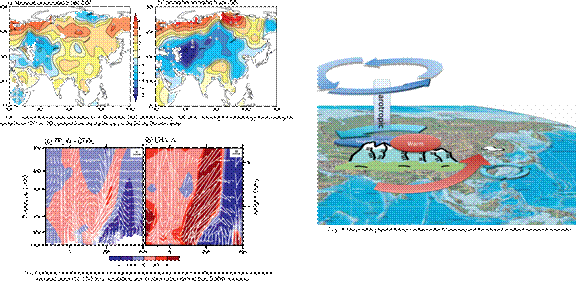Anomalous warming occurred over the Tibetan Plateau (TP) before and during the disastrous freezing rain and heavy snow hitting the central and southern China in January 2008 (Fig1). The relationship between the TP warming and this extreme event is investigated with an atmospheric general circulation model. The results demonstrate that the TP warming induces favorable circulation conditions for the occurrence of this extreme event, which include the deepened lower-level South Asian trough, the enhanced lower-level southwesterly moisture transport in central-southern China, the lower-level cyclonic shear in the southerly flow over southeastern China, and the intensified Middle East jet stream in the middle and upper troposphere. Moreover, the anomalous TP warming results in a remarkable cold anomaly near the surface and a warm anomaly aloft over the central China, forming an stable stratified inversion layer that favors for the formation of the persistent freezing rain (Fig2). The possible physical linkages between the TP warming and the relevant resultant circulation anomalies are proposed (Fig3).

Qing Bao, Jing Yang, Yimin Liu, Guoxiong Wu, Bin Wang, 2010:Roles of Anomalous Tibetan Plateau Warming on the Severe 2008 Winter Storm in Central-Southern China, Mon. Wea. Rev., 138, 2375-2384, DOI: 10.1175/2009MWR2950.1
